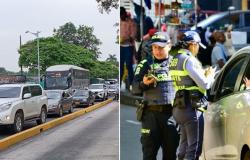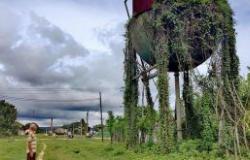Desiderio Vaquerizo will present this afternoon at 8:30 p.m. at the Friendship CircleRoman Córdoba: The hidden city, a book edited by Almuzara that has already been described as “monumental” and that was created at the suggestion of a friend of the author, Dr. Fernando López Segura, a lover of antiquity. He Vaquerizo’s purpose was to write a luxury work that offered a compendium on the city’s Roman past. The result, which has been possible thanks to the support of the publisher and the patronage of Eugenio Sánchez Ramade, is “a tool that offers a vademecum where you can find all the information about Roman Córdoba for educational and identity use, since Córdoba has always put aside its Roman past and I understood that it was necessary to reclaim it.
The hidden city
That’s where the subtitle comes from. The hidden city which is explained because «the Roman stage, the oldest that the city has in its historical headquarters has been plundered by different civilizations, it has been transformed, reused but, above all, in these last 40 years, with the real estate boom, has suffered many losses and the little that remains or is hidden in basements and garages that cannot be accessed, is raising dandelions in four plots that are preserved or is being intervened in a rather abrupt way. The objective of this book was, therefore, to reclaim that legacy, «bring it to light and offer it in a collective work beautiful, cared for that serves to understand that first of all Córdoba was Roman. In Vaquerizo’s opinion, «Córdoba has enhanced its Islamic legacy, falling into the stereotype of selling to the world the image of the Moorish, Islamic, more picturesque and traditional Córdoba. And, although he recognizes that current Córdoba, at an idiosyncratic and character level, “is more Muslim than Roman because that character has been enhanced, due to genetics and because the Muslims left less centuries ago than the Romans,” the city has not been able to find solutions for the Roman remains, «which are usually in the lowest areas and are more difficult to treat because they are also usually monumental” and continues, he affirms, promoting the prototype of Muslim heritage “forgetting that none of this would have existed without a city founded by the Romans, who gave it its classical image and They established the basis of their walls, their streets, their institutions and their language». And he insists, “first we were Romans and then everything else.” Regarding the Roman legacy, Vaquerizo remembers that “the city did not exist until Rome created it.” The old city, the Turdetana, was in the Cruz Conde Park “and It is the Romans who decide to create a new city, Cordubain the hill that today is the area between Colón and Tendillasin the old republican city and, after being destroyed by Caesar in the civil wars, it expands to the river and becomes a monumental city, at the service of the imperial idea of Augustus. In this sense, he emphasizes, “the Romans established the image of the city, its layout, the walls, the main streets, the law and the language because we do not speak Arabic but a Romance language that comes from Latin, in short, they leave us the essence of our culture.
Roman Córdoba and Al Andalus
In this regard, the archaeologist points out that the Muslims “when they arrived in Córdoba they had drunk from the classics and they had training that went through the Greek and ancient world and promoted the recovery of classical texts, the library, medicine, physics, astronomy that they recovered from the heritage of the ancient world. About Al AndalusVaquerizo is emphatic: «Without that Roman Córdoba, Al Andalus would not have been what it was», he states, «Andalusian splendor is based on Roman splendor, the Muslims would never have chosen Córdoba as the capital if it had not previously been the capital of Baetica, since the city represented a symbol, Córdoba was the head of the territory and if you dominate The capital dominates the rest physically and culturally, which is why there is an exercise in cultural impersonation, he explains, and gives as an example the creation of the suburbs “which are of a classical type”, or the reuse of old Roman sarcophagi in places like Medina Azahara as sources.
In his opinion, “the People do not talk about Roman Córdoba, which was a city emulating Rome in the 1st and 2nd centuries AD, absolutely colossal, because he does not know it and because there is a lack of patrimonialization. His book shows “where the unseen remains are so that they can be reclaimed” with the idea of ”starting a movement that brings light back to that Roman Córdoba, seriously and without concessions.” It is very difficult to imagine what Roman Córdoba was like, that is why the book includes many infographics and reconstructions so that you understand what the spaces were like. For the author, “we cannot continue destroying and hiding this legacy out of laziness, it is time to recover our roots.”






